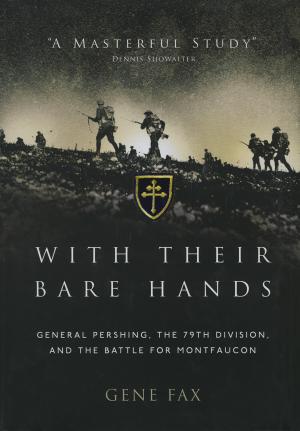September 2017 Book Reviews
September 2017 Book Reviews
Joint Ops Key to Central Pacific Campaign
The Fleet at Flood Tide: America at Total War in the Pacific, 1944–1945. James D. Hornfischer. Bantam Books. 640 pages. $35
By Col. Gregory Fontenot
U.S. Army retired
New York Times bestselling author James D. Hornfischer’s aptly named The Fleet at Flood Tide examines joint U.S. operations during the Central Pacific campaign to seize the Mariana and Palau islands. In and of themselves, these islands were not vital. But the U.S. had long thought about what Hornfischer calls a “transoceanic” operation across the Central Pacific.
The islands would serve as steppingstones toward Japan and afford the U.S. Army bases from which its air forces could mount a strategic bombing campaign of Japan. Equally important, the island groups lay within Japan’s defensive perimeter. Thus, it would fight to defend them.
Hornfischer argues that the battle for Saipan in the Marianas tipped the scales toward total war against Japan. It played out in bitter fighting in the Mariana and Palau islands, Okinawa and the Philippines. This story warrants reading by all who serve, as it illustrates the advantages and obstacles to joint operations. In the Pacific, the U.S. had no need to designate and sustain a main effort. The Pacific Theater had done without through the early years of the war. Too few amphibious craft restricted timing and capacity at Normandy, but not in the Central Pacific. Adm. Chester Nimitz and Gen. Douglas MacArthur could advance along their separate axis because the Navy’s capacity had become overwhelming. At Midway, Adm. Raymond Spruance fought outnumbered with little in reserve. The tables had turned by 1944.
Spruance, who as a task force commander beat the Japanese strike force at Midway, ably led the enormous U.S. Fifth Fleet in the sea, land and air operations necessary to take the Mariana and Palau islands. The Fifth Fleet’s resources included Marine Lt. Gen. Holland M. Smith’s expeditionary troops, composed of two amphibious corps. The Third and Fifth Amphibious included three Marine divisions, a separate brigade, two Army infantry divisions and corps troops, many of whom were Army.
The campaigns to take the islands paid off, providing the B-29 bomber air armada bases and an emergency airfield for damaged aircraft. This was an example of the benefit of joint operations. The Navy and Marine Corps paid in blood for these bases. At the same time, these campaigns reveal the dark side of service parochialism and culture. Hornfischer acknowledges the depth of Navy and Marine parochialism, but he fails to examine closely what this may have cost in World War II and since. To do that, he would have to more carefully study Army operations in the Pacific.
This is not serious criticism, as he makes the mean-spirited parochialism of Smith and Adm. Richmond Kelly Turner apparent. Turner was, to say the least, acerbic in his dealings with others. Hornfischer asserts that one of Turner’s peers thought that he made the “violent friction” between the Army and Navy even worse. Turner had little use for soldiers and less use for their opinions. Arguably, only Smith was a bigger blowhard and more small-minded than Turner.
One of the irritants between the Army and Marine Corps that continues to affect relations between the two took place on Saipan. Holland Smith asked Turner to relieve Maj. Gen. Ralph Smith, commanding general of the 27th Infantry Division, because Ralph Smith was insufficiently aggressive. A more careful analysis would suggest that the differing tactical approach, Holland Smith’s prejudice and the 27th Division’s fighting in rough terrain with the enemy threatening its flanks may have accounted for rates of advance differing. Certainly, Turner had the authority to relieve Ralph Smith, but ultimately Holland Smith’s request was kicked up the chain of command and Ralph Smith was relieved of command. Personality and attitude matter in commanding joint operations.
The Fleet at Flood Tide is well-written and offers insights into large-scale operations, obstacles to joint integration and, most importantly, the benefits of joint operations.
Col. Gregory Fontenot, USA Ret., commanded a tank battalion in Operation Desert Storm and an armor brigade in Bosnia. A former director of the School of Advanced Military Studies and the University of Foreign Military and Cultural Studies, he is co-author of On Point: The United States Army in Operation Iraqi Freedom and author of The 1st Division and the US Army Transformed: Road to Victory in Desert Storm 1970–1991.
* * *
Engaging in Small Wars Is a Serious Matter
Waging Insurgent Warfare: Lessons from the Vietcong to the Islamic State. Seth G. Jones. Oxford University Press. 336 pages. $29.95
By Lt. Col. James Jay Carafano
U.S. Army retired
For decades after Vietnam, the American mantra was that the best way to handle irregular warfare was not to fight that kind of war. In Waging Insurgent Warfare: Lessons from the Vietcong to the Islamic State, senior RAND Corp. analyst Seth G. Jones argues if that isn’t a realistic option, then what’s needed is a better understanding of the dynamics that drive “small wars.”
Based in part on quantitative analytical work done at RAND, Jones combines trend analysis of 181 insurgencies from around the world since World War II. This data alone suggests that just ignoring low-intensity conflict does not make sense. Guerilla wars are the most common kinds of conflicts the planet has seen for almost three-quarters of a century.
Jones also argues that this is serious, contending that, on average, insurgencies succeed as often as they fail. That point may be debatable. Insurgencies in and of themselves rarely prove decisive. More often insurgents win in the end by becoming something else—such as transforming into a political force that wins control or a conventional military that seizes power. Still, the point that insurgences can be deeply disruptive to regional peace and stability is true without question. These kinds of wars can’t just be ignored.
Jones pairs long-term trend analysis with case studies, with emphasis on recent U.S. efforts in Iraq and Afghanistan, to deliver the breadth, width and depth required for balanced, useful historical analysis.
The core of the book focuses on factors that contribute to starting an insurgency, the key components involved in conducting a shadow war (including elements from selecting an organizational structure to securing aid from an outside source) and, finally, how insurgencies end. In looking at a complexity of conflict at the strategic, operational and tactical level, from both sides of the conflict (i.e. the insurgents and the counterinsurgency effort), Jones provides a useful primer for understanding this kind of war.
What is particularly refreshing about Waging Insurgent Warfare is Jones’ dispassionate approach. Much of the contemporary writing on the topic carries the weight of opinions about how the U.S. has prosecuted the Long War against transnational militant terrorism. Jones tries to not pick winners and losers. Rather, he wants readers to get the dynamics that drive the disparate conflicts that get labeled as small wars.
For starters, those interested in the topic—while they might start with this book—ought to sample the rich body of work out there that takes up all sides of the argument and make up their minds for themselves. Recommendations include now-retired Lt. Col. John A. Nagl’s Learning to Eat Soup with a Knife: Counterinsurgency Lessons from Malaya and Vietnam, retired Col. Gian Gentile’s Wrong Turn: America’s Deadly Embrace of Counterinsurgency and retired Lt. Col. Conrad C. Crane’s Cassandra in Oz: Counterinsurgency and Future War.
As America builds its Army for the 21st century, thinking long and hard about what roles it could and should play in small wars is important. The War of the Flea, to borrow the title of Robert Taber’s book on guerrilla warfare, won’t be finished when the last Americans leave Iraq and Afghanistan.
Lt. Col. James Jay Carafano, USA Ret., is a Heritage Foundation vice president in charge of the think tank’s policy research on defense and foreign affairs.
* * *
79th Battles Its Way Through World War I
With Their Bare Hands: General Pershing, the 79th Division, and the Battle for Montfaucon. Gene Fax. Osprey Publishing. 496 pages. $32
By Col. Douglas Mastriano
Gene Fax’s With Their Bare Hands: General Pershing, the 79th Division, and the Battle for Montfaucon is the definitive word on the 79th Division in World War I. Fax traces every aspect of the unit including recruitment, training, turbulent operations in France, and return to the U.S. at war’s end.
Fax, a military historian, has the credentials to write such a book: He is a member of the Society for Military History, the Western Front Association, the National World War I Museum and Memorial, and the Army Historical Foundation. In preparation for writing this book, he spent 17 years collecting archival sources in Washington, D.C.; Baltimore; Paris; West Point, N.Y.; and Carlisle, Pa., even visiting the Montfaucon battlefield in France.
The experience of the 79th Division was not an easy one. Cobbled together in mid- to late 1917, the unit suffered from incomplete military training, poor leadership and hastily assembled units not ready for modern combat. These challenges were exacerbated by lack of a coherent American strategy before the country was drawn into the war.
The Meuse-Argonne Offensive remains the largest attack in American history, with more than 1.2 million men participating. However, largely due to the reasons noted above, the American experience in the Meuse-Argonne was far from ideal. Suffering more than 20,000 casualties, the Americans attempted to use overwhelming numbers and brute force to break the German defenses. Often this meant using frontal assaults into the teeth of concealed German machine-gun emplacements.
Thus was the experience for the 79th, a green division assigned one of the most important missions of the campaign: seizing the key terrain of Montfaucon. Situated just a few kilometers behind the front line, Montfaucon is a large hill that offered the Germans an expansive view and control of everything from the Argonne to Verdun. Fax recounts in brilliant color the travails of the 79th’s men endeavoring to fulfill their mission in the face of a dug-in and better-trained adversary. As one may expect, the attack of the 79th Division did not go according to plan, and the capture of Montfaucon took longer than Gen. John J. Pershing required. In the end, the 79th took the hill, albeit at great cost in lives and treasure. Fax does an excellent job telling the story of this division in the Meuse-Argonne, its remaining days on the line and its eventual journey back to the U.S. in 1919.
The title of the book led me to believe it would largely tell the story of the 79th Division and its experience in the Meuse-Argonne campaign. However, it tells the story of the 79th Division from the beginning to the end of the war. The reader may become a bit impatient with the telling of the complete saga of the division as Fax goes into great detail about recruitment and training. However, he ably describes its combat experience in the Meuse-Argonne.
One of the best aspects of this book is the extensive use of German unit histories. This is not just another one-sided story, so common in American books on World War I. The scholarship and depth of sources from both sides of the Atlantic are impressive. Additionally, Fax did not fall prey to the naive view popular today that there was some sort of conspiracy that prevented the 79th from taking the hill on the first day of the attack. His telling the story without fabricating a tale of betrayal and intrigue is a refreshing approach.
The book is well-written, a good read and a fine addition to the World War I centennial commemorations. I recommend it as one of those few studies that tells not just the story of the Americans in the Meuse-Argonne, but also that of the Germans.
Col. Douglas Mastriano teaches strategy at the U.S. Army War College. He is a veteran of Iraq and Afghanistan who has served at tactical, operational and strategic levels of command. He holds a doctorate from the University of New Brunswick, Canada, and is the author of Alvin York: A New Biography of the Hero of the Argonne.
* * *
A Timely View of First Commander in Chief
Fatal Sunday: George Washington, the Monmouth Campaign, and the Politics of Battle. Mark Edward Lender and Garry Wheeler Stone. University of Oklahoma Press. 600 pages. $34.95
By Lt. Col. Timothy R. Stoy
U.S. Army retired
Before his elevation to divine status, George Washington was a man given the awesome responsibility of leading an amateur Army against the world’s most powerful and successful professional army. His success seems a foregone conclusion in hindsight, but at the time it was far from assured. There were powerful men who doubted Washington’s capabilities, who disagreed with his plans for a strong Continental Army, who believed no Colonial army could defeat the British Army on equal terms on the battlefield. In 1778, Washington not only fought a political-military campaign against the British, but he also waged a political campaign in Congress and within his Army to secure his command.
Fatal Sunday authors Mark Edward Lender and Garry Wheeler Stone are historians with impressive résumés. Lender is professor emeritus of history at Kean University, N.J., and has authored or contributed to more than 10 other works on the Revolutionary War. Stone is a retired archaeological historian and former president of the Society for Historical Archaeology.
The authors provide a timely reminder of America’s situation in 1778 when American independence was a questionable proposition. Washington had lost more often than he had won. American Maj. Gen. Horatio Gates had scored a significant victory at Saratoga, N.Y.
Congress and the public demanded a success from the commander in chief in the main theater of war. More than a few questioned whether Washington was the man to achieve that success.
There were other potential commanders—Maj. Gens. Gates and Charles Lee, both with more regular military experience than Washington and with political connections.
Fatal Sunday covers not just the fighting (it does this very well) but also the politics of high command, which in this case includes how Washington and his adherents in the Army and in the political realm dealt with his potential rivals.
Today, the Battle of Monmouth, N.J., is seen as a great victory by a renewed American Army over the vaunted British Regulars. The authors show that while American forces performed well, the British were not defeated—they continued their successful withdrawal from Philadelphia to New York with Lt. Gen. Sir Henry Clinton fighting only to protect his sizeable baggage train.
Washington, however, could not allow the British to move through New Jersey unhindered. He needed to attack and secure a significant victory. The battle was a draw, but Lender and Stone illustrate how Washington’s adherents successfully portrayed this draw as a great victory, the victory Washington needed to secure his command of the Continental forces. They also effectively scapegoated Lee for his supposed mishandling of the American advance force and eliminated him as a potential replacement for Washington.
The authors point out serious shortcomings in Washington’s command of the battle, the most serious being his failure to ensure Lee and other senior commanders understood his intent. He failed to ensure the main body of the American Army was within supporting distance of Lee’s advance force, placing Lee’s force in danger and risking defeat in detail should Clinton attack. They also provide excellent overviews of Washington’s and Clinton’s subordinates and their important roles.
Most salient to their review of the politics of battle is their analysis of Lee’s character, his military abilities, his political missteps, the difficult tactical situation he encountered upon taking command of the advance guard, and the disastrous (for Lee) aftermath of the battle, which led to his court-martial and subsequent historical villainization. Their review leads to the conclusion that Lee was a better commander than subsequent generations have been led to believe, and it was more his acid character and problematic personality than his battlefield performance that led to his fall.
Fatal Sunday is an excellent and timely book covering an important formative period in our Army’s history with lessons still applicable to senior battlefield commanders.
Lt. Col. Timothy R. Stoy, USA Ret., is the historian for the 15th Infantry Regiment Association and the Society of the 3rd Infantry Division.





